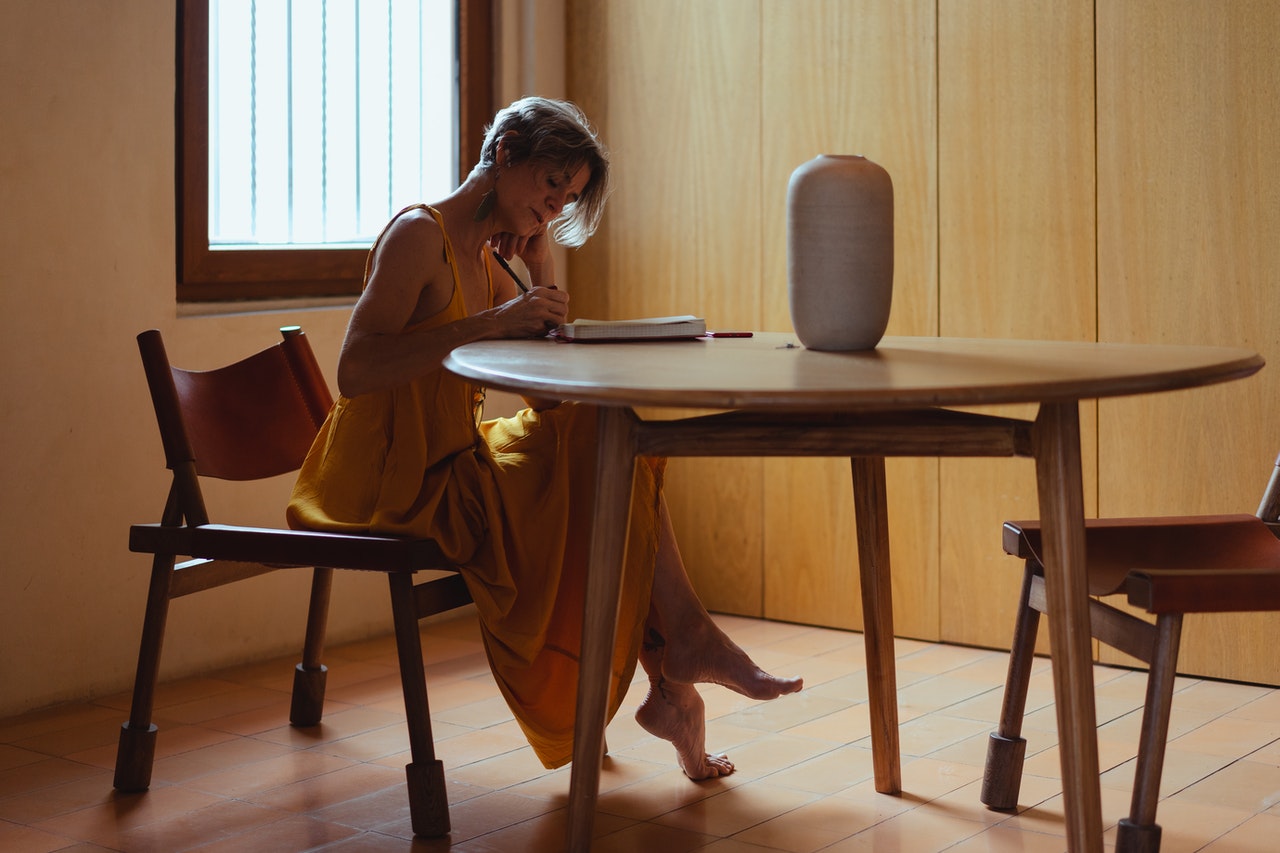Do you think that some personalities are more creative than others?
Your outgoing, bubbly, and energetic friends or colleagues make creativity look as easy as breathing. But what if creativity went further and deeper than that? Let’s take a look at how personality influences creativity so you can unlock your own creative potential – no matter your personality type – and help others do the same.
Understand Creativity
Before you delve into the relationship between creativity and personality traits, you must first define what creativity is and understand its role in both your personal and professional life.
What is Creativity?
Creativity, in its most basic form, is the ability to produce original ideas or solutions that are both novel and valuable. It involves thinking outside the box and approaching problems from unique perspectives.
Creativity isn’t limited to artistic fields, but extends to:
- scientific
- technological
- everyday problem-solving contexts
Several theories attempt to explain the process of creativity – each of these theories offers a unique perspective on how creativity works and how it can be fostered.
- The explicit–implicit interaction (EII) theory suggests that creativity arises from the interaction of explicit and implicit cognitive processes.
- The concept of big C and little c creativity differentiates between ground-breaking creativity (big C) and everyday creativity (little c).
- The concept of divergent and convergent thinking suggests that creativity involves both generating multiple ideas (divergent thinking) and combining these ideas into the best result (convergent thinking).
When you understand these concepts you will have a deeper insight into the creative process and be able to answer your question, “What is creativity?”.
The Role of Creativity in Personal and Professional Life
Creativity plays a pivotal role in both your personal and professional life.
On a personal level, it fosters self-expression, personal growth, and problem-solving skills. It allows you to see the world in unique ways, to express yourself through various mediums, and to find innovative solutions to everyday problems.
In a professional context, creativity is highly valued in many fields. It drives innovation, problem-solving, and adaptation to changing circumstances. Businesses often seek out creative employees as they bring fresh ideas and perspectives that can give the company a competitive edge.
For instance, when you come up with a new advertising campaign, find a solution to a complex business problem, or design a user-friendly software interface, you realize that creativity is a crucial component of professional success.
While creativity is often associated with certain personality traits, it’s also important to recognize that it’s not confined to a specific type of person. Everyone has the potential to be creative, which is the first step towards exploring the question, “Is creativity a personality trait?”
Creativity and Personality Traits
As we delve into the relationship between creativity and personality, we must first define what we mean by personality traits and address the question, is creativity a personality trait?
Defining Personality Traits
Personality traits are characteristic patterns of thoughts, feelings, and behaviors that distinguish one person from another.
These traits are usually consistent over time and across different situations. They range from aspects such as:
- extraversion and introversion
- openness to experience
- conscientiousness
- agreeableness
- neuroticism
Is Creativity a Personality Trait?
The relationship between creativity and personality has been a subject of numerous research studies. The question, “is creativity a personality trait?” is a complex one. Creativity, in itself, isn’t considered a standalone personality trait but is often associated with several other personality traits.
One of the traits most commonly linked with creativity is openness to experience, one of the five traits in the widely accepted Five Factor Model of personality. If you score high on openness to experience you will exhibit a strong inclination towards imagination, curiosity, and novelty, traits that are closely associated with creative thinking. For a deeper understanding of this concept, read about creativity’s big c and little c.
However, creativity isn’t exclusive to individuals with this trait. Creativity can be seen across all personality types, influenced by aspects like your environment, experiences, and mindset. For instance, if you’re extroverted, you might express your creativity through social interactions and dynamic discussions, while introverted individuals might express creativity through introspective thinking and individual projects.
It’s also influenced by other factors such as intelligence, as explored in our article on is creativity related to intelligence, and even aspects of your physical health, like sleep, as discussed in our article on how does REM sleep impact creativity.
In conclusion, while creativity is not classified as a singular personality trait, it is closely interwoven with several personality traits and influenced by a myriad of factors. Understanding this can help you harness your unique creative potential, regardless of your personality type.
The Five Factor Model and Creativity
To better understand if creativity is a personality trait, turn your attention to the commonly referenced Five Factor Model of personality. This model, also known as the Big Five, provides a comprehensive framework for exploring the relationship between creativity and personality traits.
Overview of the Five Factor Model
The Five Factor Model proposes that human personality can be distilled into five broad dimensions: openness to experience, conscientiousness, extraversion, agreeableness, and neuroticism. Each dimension represents a spectrum along which you can vary, shape your thoughts, behaviors, and attitudes.
| Five Factor Model | Description |
|---|---|
| Openness to Experience | Preference for novelty, variety, and exploration |
| Conscientiousness | Tendency to be organized, responsible, and diligent |
| Extraversion | Degree of sociability, assertiveness, and enthusiasm |
| Agreeableness | Propensity to be cooperative, kind, and empathetic |
| Neuroticism | Likelihood of experiencing negative emotions like anxiety and anger |
How Creativity Fits into the Five Factor Model
We find that creativity is most closely linked with the ‘openness to experience’ dimension of the Five Factor Model, as we mentioned earlier. Individuals high in openness are typically:
- imaginative
- curious
- appreciative of art and beauty
Also, openness to experience is associated with both divergent thinking (generating many unique ideas) and convergent thinking (finding the single best solution to a problem). Both types of thinking are integral to the creative process. For more on this, check out our article on convergent vs divergent thinking.
However, creativity does not exist in a vacuum. It is influenced by other personality traits as well. For instance, extraversion contributes to creativity by fostering more diverse experiences and social connections, which provides a richer pool of ideas to draw from. On the other hand, conscientiousness enables the discipline and persistence you need to refine and implement creative ideas.
| Five Factor Model | Relationship with Creativity |
|---|---|
| Openness to Experience | High correlation with creativity |
| Conscientiousness | Fosters the discipline to implement creative ideas |
| Extraversion | Contributes to creativity through diverse experiences, and facilitates brainstorming |
| Agreeableness | Contribute to creative solutions through empathy |
| Neuroticism | A wide range of emotions provides rich material for creative output |
Finally, when you understand the influence of these personality traits on creativity you can recognize and cultivate your own creative potential. As you leverage these traits, you enhance your ability to think creatively and come up with innovative solutions.
For further insights into the relationship between personality traits and creativity, explore our articles on is creativity related to intelligence and how does REM sleep impact creativity.
Remember, creativity is a complex phenomenon, influenced by a myriad of factors beyond personality traits. These include:
- cognitive abilities
- motivational factors
- environmental conditions
Enhance Creativity
While the debate on whether is creativity a personality trait continues, it’s universally agreed that creativity can be nurtured and enhanced.
Recognize and Develop Your Creative Traits
To recognize your creative traits is to take the first step towards developing creativity. If you are open to new experiences or display a high level of curiosity you will tend to be more creative and exhibit traits such as flexibility, adaptability, and a willingness to take risks.
In addition to this, develop your creative traits through regular practice and exposure to various creative activities. Here are some ideas:
- engage in brainstorming sessions
- participate in creative workshops
- simply spend time doodling or journaling
Strategies to Boost Creativity in Everyday Life
Boost creativity in everyday life through a combination of mental, physical, and environmental strategies. Some effective methods include:
-
Expand horizons: Engage in activities outside of your comfort zone. This could be learning a new skill, exploring a different culture, or even trying a new cuisine.
-
Practice mindfulness: Mindfulness techniques, such as meditation, can help to clear the mind and improve focus, both of which are crucial for creativity.
-
Exercise regularly: Physical exercise is known to stimulate brain activity and can help to boost creativity.
-
Embrace failure: Seeing failure as a stepping stone rather than a setback can help to foster a creative mindset.
Editor’s Note: If you’re not sure where to start to boost your creativity, be willing to try one new thing, even for a few minutes a day and then, as you grow in confidence, add in something totally different – baby steps on the ladder to creative breakthroughs.
For a deeper understanding of the cognitive processes behind creativity, explore convergent vs divergent thinking.
The Role of Environment in Cultivating Creativity
Your environment plays a significant role in cultivating creativity.
Firstly, a stimulating, diverse and supportive environment fosters creative thinking. This includes physical spaces that inspire creativity, like art-filled rooms or nature, and also supportive social environments, such as encouraging mentors or creative communities.
Also, work environments that encourage innovation, provide opportunities for learning, and allow for risk-taking often see high levels of creativity among employees.
Understand creativity’s big c and little c to provide insight into how environment influences creativity.
In conclusion, no matter where you stand on the “is creativity a personality trait” debate, it’s clear that you can nurture and enhance creativity through:
- recognition
- development
- daily strategies
- a supportive environment
So, what are you going to do to nurture your creativity?





